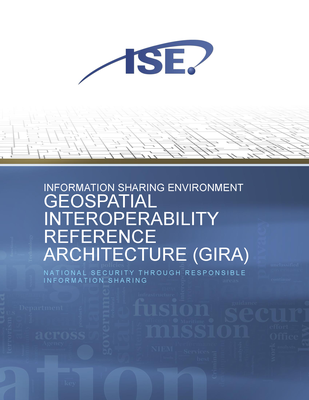The GIRA is a reference architecture aligned with current Federal policy, principles, and practices for Enterprise Architecture and further adds to the authoritative body of knowledge of geospatial architecture documentation. The GIRA is intended to make it easier to share the vast amounts of available geospatial information of potentially great value to national security, public safety, and other programs. It is an unclassified document aimed at audiences of Executive Leaders, Program Managers, and Solution Architects across Federal, State, Local and Territorial governments, and private sector stakeholders and international partners.
The GIRA consists of practical guidance including templates, charters, exchange agreements, baseline requirements matrices, architecture artifacts and tools and performance guides. It aligns to established Federal architecture policy and governance and established Federal operational geospatial system implementations.
Value & Benefits
GIRA is expected to:
-
Define governance oversight considerations that should be taken to ensure consensus and responsible program management to meet mission objectives and drive cost efficiencies.
-
Serve as a base-line target reference that identifies the necessary interoperability requirements within each of the key architecture elements (e.g., data, applications/services, infrastructure, security, standards and performance)
-
Provide best practice implementation artifacts, interoperability standards, authoritative reference documentation, performance measures and procedural guidance
-
Provide sufficient technical details to serve as inputs for operational requirements documentation, engineering designs, contract and procurement language and related activities associated with implementing interoperable geospatial architectures
GIRA is projected to have the following impacts:
-
Provide a framework for common reference architecture to guide solutions to effectively govern, manage, support and achieve interoperability through geospatial system integration, acquisition or development.
-
Provide a documented architecture(s) that can be used to support geospatial program technical oversight and technical assessments for geospatial investments.
The desired outcome of the GIRA is to increase government geospatial information sharing through interoperability and shared capabilities while reducing Departments and Agencies operational costs.
In July 2015, the Federal Geographic Data Committee’s Steering Committee unanimously endorsed the implementation path forward for the GIRA. This is a key element and success for the National Spatial Data Infrastructure Strategic Plan:
-
Supporting the development of a GIRA community on the Geospatial Platform, utilizing 1-year funds from DHS and minimal Geospatial Platform technical team core partner funds.
-
Providing active agency representation for shared stewardship responsibilities for the enhancement and collaborative design, update, and maintenance of the GIRA, and core partner funds required to maintain the community on the Geospatial Platform after the 1st year.
-
Providing leadership on establishing and executing the necessary governance structure for the GIRA outreach and content updates.
Questions about the GIRA should be directed to outreach@ise.gov


